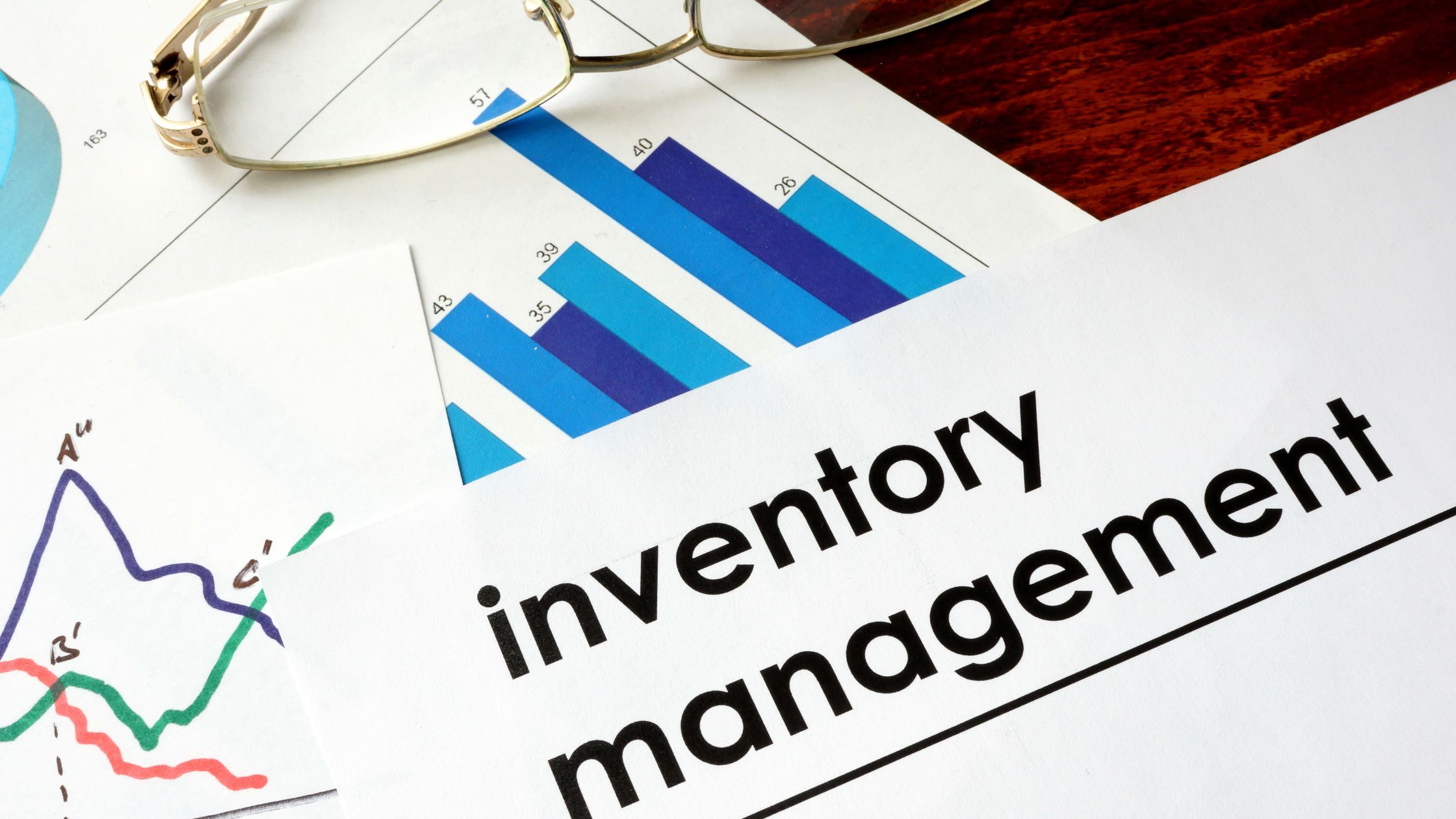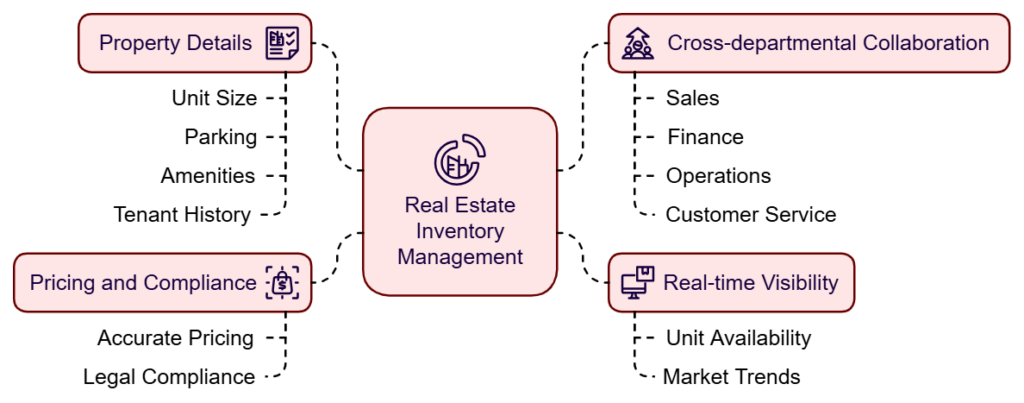
Posted By admin
 Nov 29, 2024
Nov 29, 2024 08:16:36am
08:16:36am Managing real estate inventory is a complex task, especially for large developers and property management companies, as it goes beyond merely keeping a list of properties. Managing hundreds of units across projects can overwhelm your team. Tracking availability, pricing, and tenant info become chaotic. How would it feel to lose a client due to outdated data? Or worse, lose a sale because no one confirmed the correct price in time? Having the right tools in place isn’t just helpful; it’s crucial – property management inventory software plays a key role in resolving this issue.
This blog explores how inventory software can revolutionize real estate operations and help key stakeholders make data-driven decisions that lead to faster deals, better financial management, and improved collaboration.
A property management inventory software streamlines property management by tracking inventory and managing tenant relations efficiently. Unlike generic software solutions, this focuses on offering features that help manage single or multiple properties efficiently.

For example, in a residential project with diverse units—apartments, villas, and mixed-use spaces—the software allows managers to define unit details, track availability (available, booked, or leased), and manage information such as parking allocations, legal entities, and floor plans—all in one platform.
Real estate inventory is unique—unlike other industries, where products can be mass-produced, each property or unit is distinct. Consequently, this uniqueness complicates tracking availability, pricing, and inter-departmental coordination. Furthermore, managing properties across multiple locations—whether residential or commercial—can lead to confusion without proper systems in place.
For large real estate developers or property management companies, inventory management often includes:

Without the right tools, these challenges can result in lost opportunities, longer deal cycles, and inaccurate data, making it hard to maintain efficiency.
Real estate companies use software like this to gain significant benefits that improve efficiency and performance, such as:
Managing unit availability manually causes miscommunication, delays, and missed opportunities. Without a real-time view of inventory, property managers risk:
Property management inventory software provides up-to-date information on the status of units across properties. Managers can instantly view details about units that are:

With instant access to unit details, managers can quickly market properties, reducing vacancies and improving client trust.
Imagine a property manager oversees 200 units using software with a centralized dashboard and instantly views the current status of all units. When a client inquires about an apartment, the manager quickly confirms its availability, avoiding delays and securing interest.
We’ve all experienced the chaos of managing leads—emails, sticky notes, or relying on memory to track potential tenants, often leading to missed opportunities and delayed follow-ups. A centralized platform resolves these issues by streamlining all end-to-end operational processes.

Automated Lead Capture: – Software captures leads from various channels automatically, eliminating the need for manual tracking and ensuring your team doesn’t overlook potential clients.
Efficient Lead Nurturing: – Categorizes and nurtures leads using predefined workflows, seamlessly guiding them through the sales pipeline.
Integrated Contract Management: – Once a deal progresses, the system manages contract creation and completion, reducing errors and delays.
A sales manager at a large residential development no longer has to manually track hundreds of leads. With the software, leads are automatically captured, categorized, and nurtured until they’re ready to convert into tenants. This ensures that no potential client is missed, even during busy periods.
The software automates key tasks like lead capture, follow-up, and contract management, which saves valuable time, reduces human error, and helps push deals through the pipeline faster.
Effective teamwork in real estate operations can often be hindered by:
Property management inventory software resolves these issues by streamlining collaboration through centralized tools and real-time data sharing:

When a unit is sold, the sales team updates the buyer and payment details in the system. The finance team reviews transactions, and management tracks sales progress. Centralized data ensures all teams access accurate information, promoting transparency and efficiency.
One of the standout features of property management inventory software is the ability to adjust unit prices or areas in bulk.
Swift Price Adjustments: – Property managers instantly update unit prices, rental rates, or leasable areas for multiple units at once, applying percentage or fixed adjustments without errors.
Market Responsiveness: – Flexibility to adapt pricing to current demand ensures managers can capitalize on market trends, maximizing revenue and minimizing vacancies.
Time Efficiency: – Bulk update features eliminate the need for manual updates, saving hours of administrative effort and reducing the risk of inconsistencies.
Let’s say, a property manager in Sydney notices a surge in rental demand during the quarter, driven by international students and professionals. Using the software, they quickly apply a 10% rent increase to all available one-bedroom apartments in the city center with just a few clicks, maximizing revenue without the hassle of manual updates.
In real estate, finding ways to offer additional value to clients can be a challenge, especially when:
Property management inventory software resolves these challenges by enabling personalized, targeted offers that drive both cross-selling and up-selling:
Comprehensive Client Profiles: – Detailed info about units, tenant preferences, and available amenities, giving sales and leasing teams valuable insights into what each client may need or appreciate.
Tailored Recommendations: – By analyzing tenant requirements teams can suggest premium units or add-ons that align with the client’s preferences, increasing the overall lease value.
Increased Revenue and Satisfaction: – Offering additional value that directly meets a tenant’s needs not only boosts revenue but also enhances client satisfaction, fostering trust and long-term loyalty.
A leasing agent in Los Angeles uses the software to identify a tenant’s need for two parking spots. They recommend a premium unit with two reserved spaces and a better view, increasing lease value while fulfilling the tenant’s requirements.
Tracking unit availability literally takes time-consuming and is prone to errors, especially when:
We can resolve these issues with color-coded stacking plans that simplify inventory management.

A property manager uses a stacking plan to visualize occupancy in a high-rise office building. Floors are color-coded: green for available, red for leased, and yellow for reserved. By quickly spotting vacancies on the 10th floor, they can easily direct brokers or clients, saving time and speeding up decision-making.
Onboarding new properties can be a lengthy and error-prone process, especially when:
These challenges were resolved using a property management inventory software;
The software helps property managers launch new properties faster, streamline operations, and reduce costly delays in bringing assets to market by speeding up the onboarding process.
Software offers powerful reporting and analytics tools that help property managers to make informed, data-driven decisions. Includes;
A CIO at a large real estate company uses custom dashboards to track tenant retention, vacancies, and rental income. Noticing low retention rates in certain buildings, they adjust leasing strategies, such as offering incentives or improving amenities. This data-driven approach helps reduce vacancies and boost tenant satisfaction.
I’m sure you already have an idea about what is property management inventory software and its benefits. Adopting software like Property-xRM powered by Microsoft Dynamics 365 empowers real estate companies with the tools they need to manage their inventory portfolios effectively. From real-time inventory visibility to improved collaboration and faster deal cycles, this software simplifies the complexities of managing unique properties and units.
Whether you’re managing residential, commercial, or mixed-use properties, investing in a robust inventory management solution is key to staying competitive in today’s real estate market.
Ready to elevate your property management? Explore how Property-xRM can transform your operations and enhance community living today!


